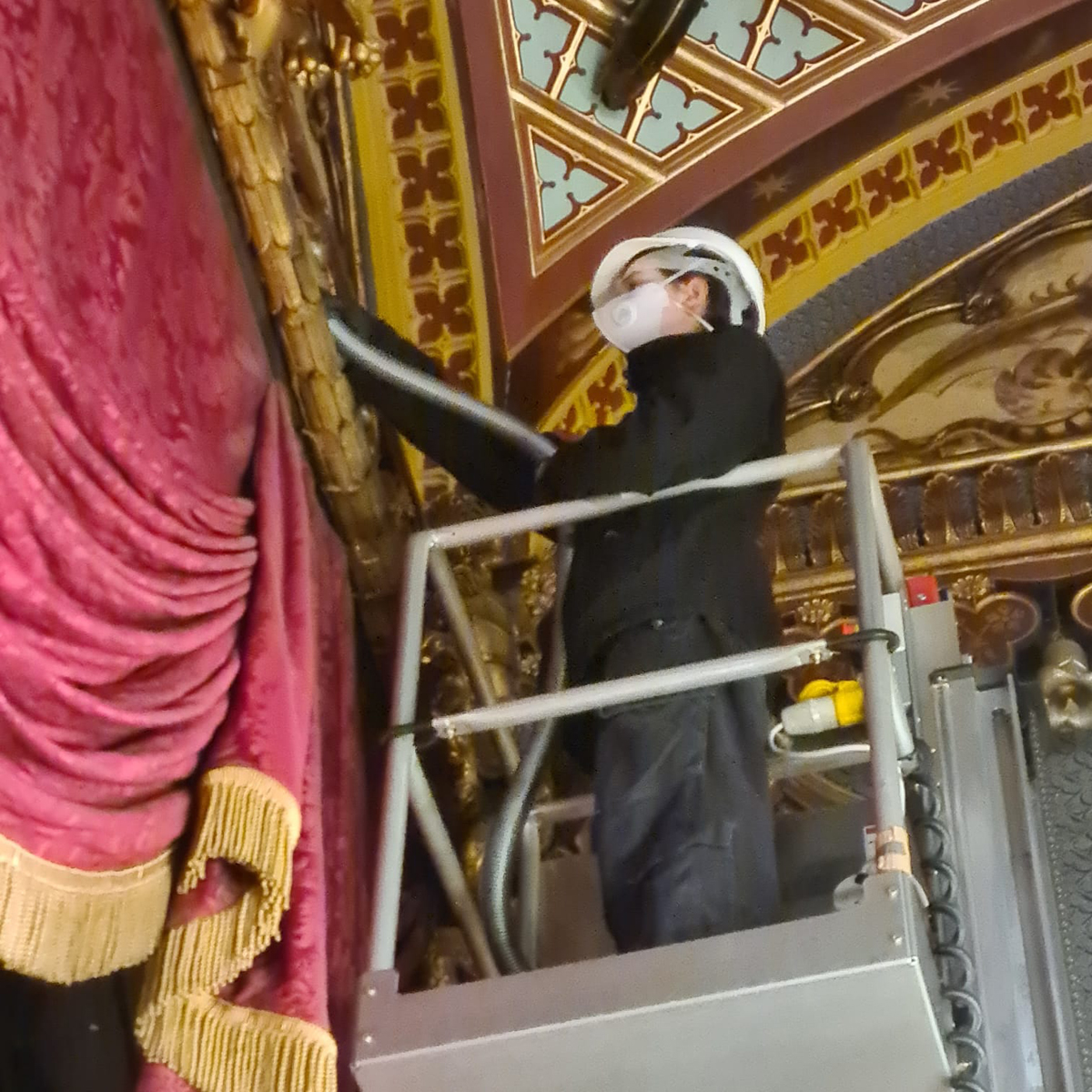The Mould Wears Prada – A Graduate Conservator Project Update
Dominic Oakes, Conservation Assistant and Graduate Conservator, continues a series of blog posts from the Graduate Conservators at Brighton & Hove Museums.
The Costume Store
The Costume Store within Brighton Museum and Art Gallery houses around 12,000 objects relating to textiles – mainly articles of clothing, but also needlework samplers, paperwork and photographs of fashion among other things.
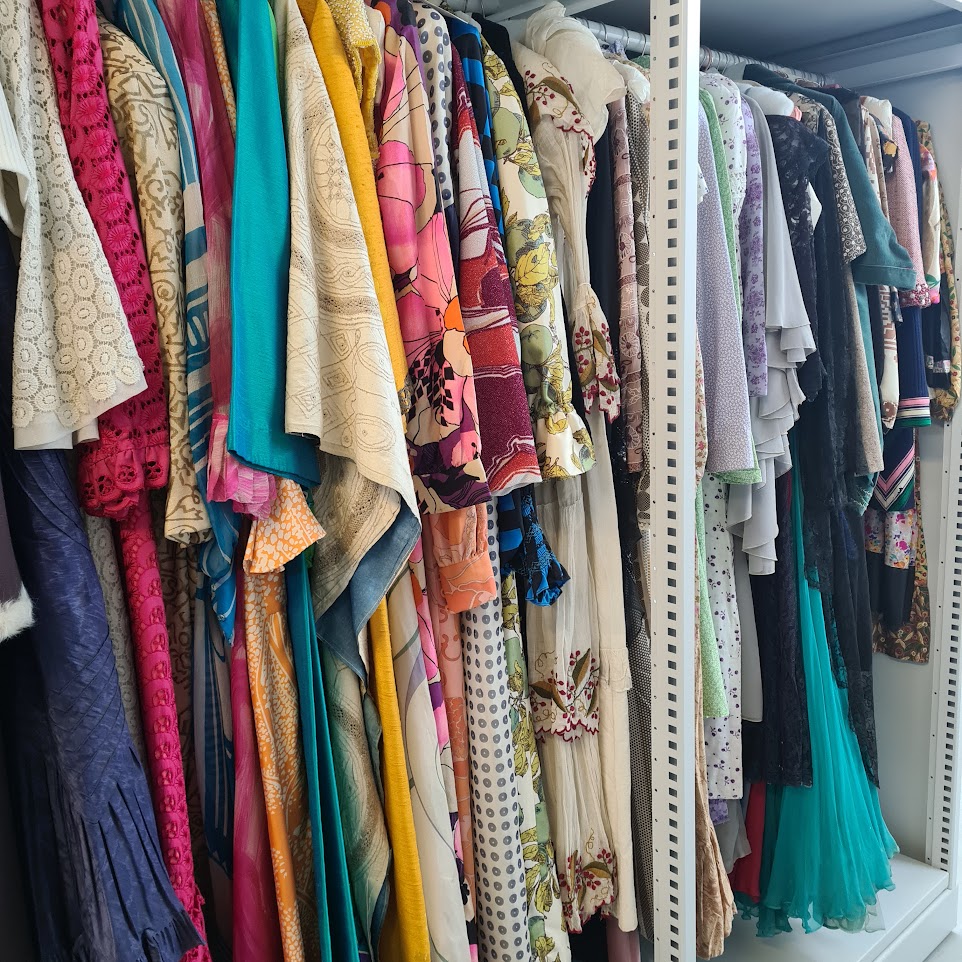
This year I took on the role of leading a project to assess and treat the objects inside – with a particular focus on mould that had become widespread throughout the store. Work has already begun and is ongoing aiming to rectify possible causes of the mould, for example high humidity and overcrowding.
High amounts of water in the air in areas of low temperature allow mould to thrive, so reducing the relative humidity can prevent mould regrowth. Running heating and dehumidification helps to achieve this. Overcrowding within the store however can hinder this. It will create micro-environments where there cannot be any air circulation, causing damp, cool air to be trapped and allows the mould to prosper.
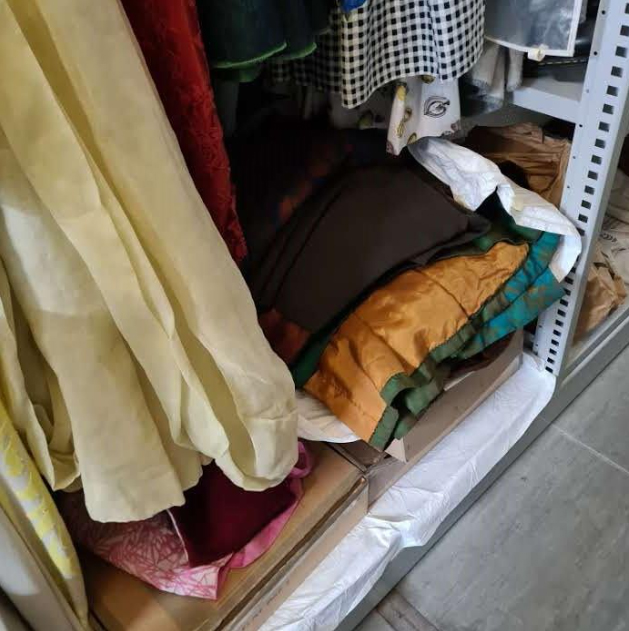
Before the commencement of the costume mould cleaning; myself, Emily Darragh (Conservation Assistant) and Tessa Corton (Graduate Conservator) undertook a deep clean of the Costume Store.
This involved brushing down all the walls, wiping down the top, sides and shelves of the racking and vacuuming the floor throughout the store.
The aim of this was to reduce the dirt and dust within the store, and any mould spores that may have been lingering on surfaces.
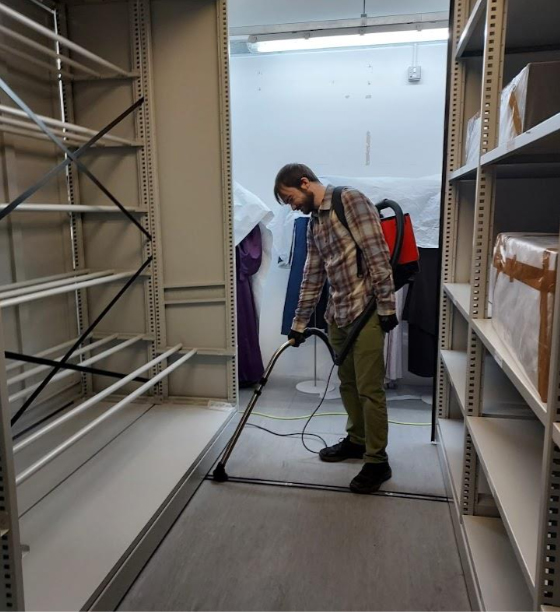
With this completed it ‘reset’ the room. With the ongoing object cleaning, they are now at reduced risk of becoming contaminated when removed from the racks, or spores being dispersed further throughout the store while moving.
An area of racking has also been designated as a quarantine area for any objects found with mould – this has been sealed with polythene to prevent spores escaping onto clean objects while they await treatment.
In February, I was joined by two volunteers from the University of Brighton currently partaking in the Curating Collections and Heritage MA, Feyza Nur Bacak and Emily McLaughlin.
Emily McLaughlin
I’m Emily and I am studying this MA to get into the heritage sector, with hopes of working in collections care and management. I am particularly interested in fashion and dress history, so volunteering on this textile project at Brighton Museum and Art Gallery is such an exciting opportunity.
So far, the most interesting objects we have looked at have been the boxes containing textiles used and worn by Royals, such as King George IV and Queen Victoria. I am also looking forward to seeing the hanging Victorian garments in the racks that we have not yet reached.
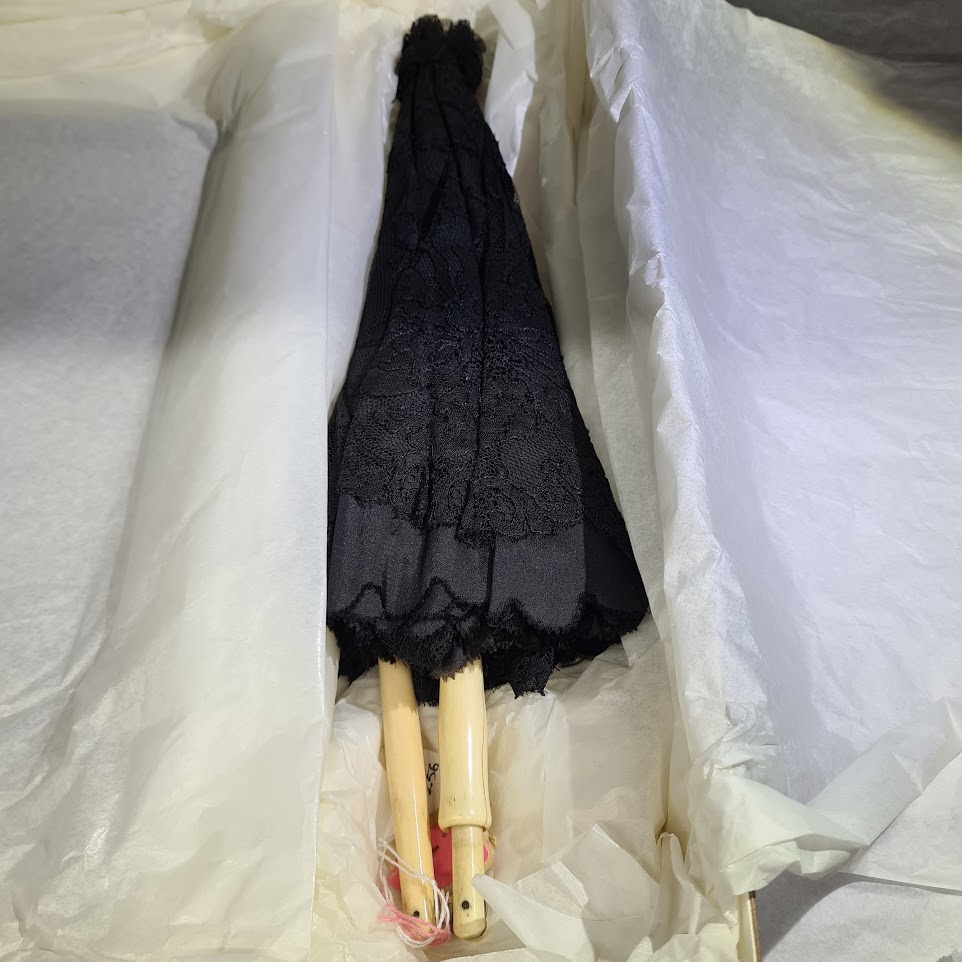
Feyza Nur Bacak
I am Feyza and I am studying MA in Curating Collections and Heritage. My background is in Art History, which is why I would like to explore further into museum work. I am particularly interested in the field of conservation and exhibition, and therefore working on this project offers me a great experience regarding conservation and cleaning. It is exciting to be involved in the project and to have direct answers to my questions.
The most interesting work I found so far was the memoriam of Queen Victoria. I have never seen such an object before, and its condition was very good.
I’m also looking forward to working on the dress called “Who Killed Bambi?” designed by Giles Deacon, currently hanging in the store.
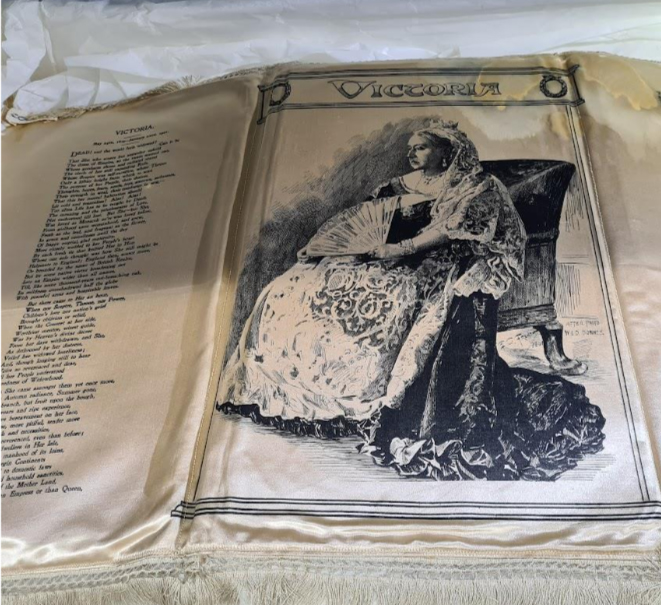
Dominic Oakes
Upon their arrival they have received training from myself and other colleagues from the Conservation team. This included health and safety, object handling, damage identification and treatment methods for varying materials and scenarios.
Since then, we have been methodically working our way through the racks within the costume store – inspecting each object for any signs of concern and treating it as it is found.
Most of the treatment so far has been for the removal of mould, evident by patches visible on the surface of the objects. While active it will appear white, fluffy and raised from the surface, but can also appear flatter and with a duller, greyish appearance if dormant. Dormant mould can be reactivated in favourable conditions so is equally important to remove.
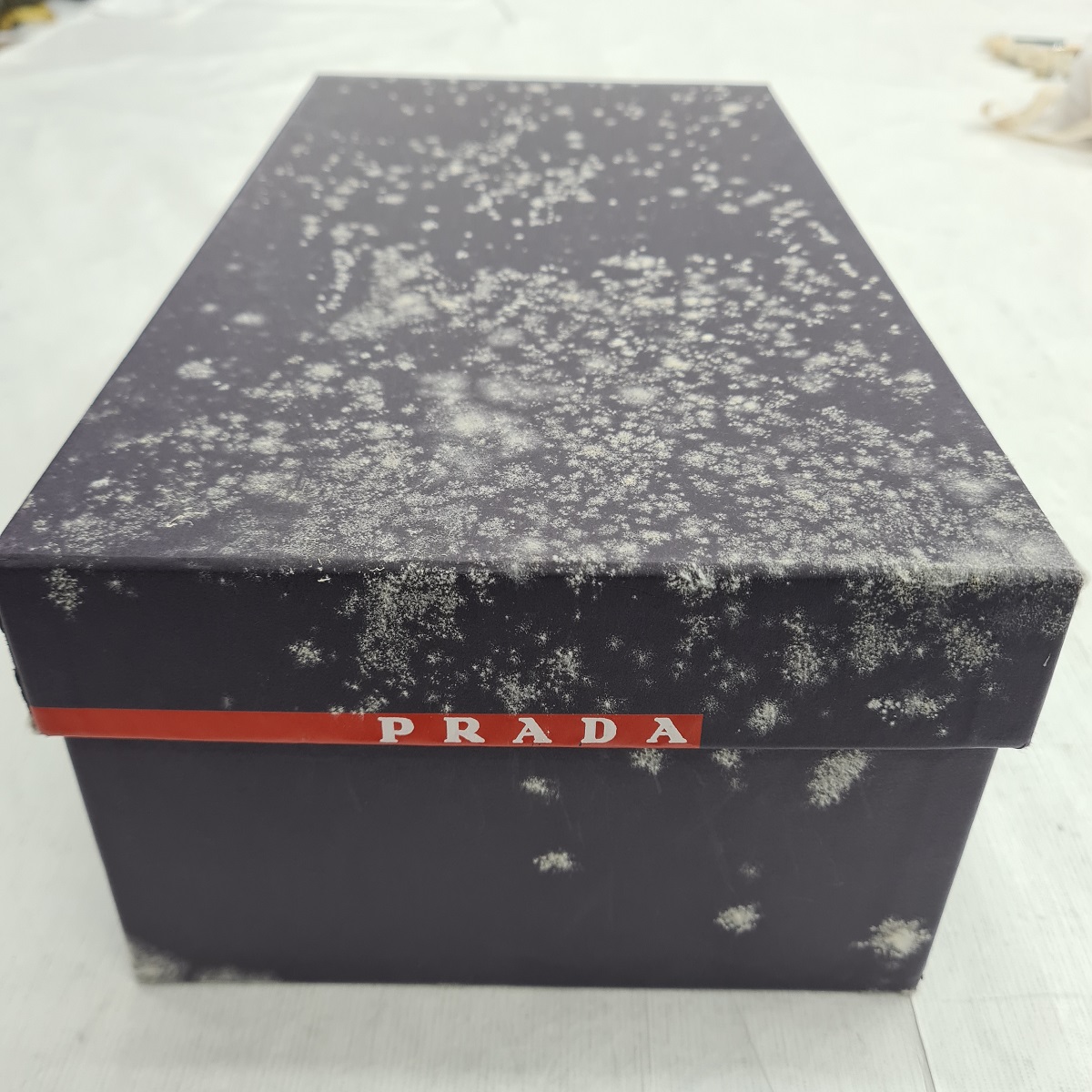
If left on the objects, mould will aesthetically distract from the object and can pose a health risk to those close by. It also provides a food source for certain pest species and, if left long enough, can cause permanent staining, weakening and/or complete destruction of fibres.
To remove the mould found, we have been using a combination of methods based on the material type and stability of the object. For sturdier objects, such as a solid wooden frame, a vacuum cleaner with a HEPA filter is held close by to the mould, while a brush is used to sweep the mould into the nozzle. This reduces the chances of any spores escaping.
For more delicate objects such as textiles, a mesh covering is placed over the nozzle and the vacuum is used on the lowest possible suction. This way the fibres of the textile are not pulled by the force, but the mould spores are. If any loose threads were to detach, then they would be caught by the mesh and recovered.

We have also found a few examples of historic pest damage, where insects such as webbing clothes moths, case-bearing clothes moths and carpet beetle larvae, have eaten away at the fabrics, leaving holes behind. These infestations had already been dealt with, but the evidence of them remained as good examples to show the volunteers.
One box however did have signs of more recent pests – some woolly bear cases from shedding their skin were spotted alongside frass (insect poo). Frass can sometimes be difficult to spot as the colour will match whatever they have been eating. Having white coloured materials wrapping and supporting objects helps to spot the frass easier and, in this case, the brightly coloured frass from a belt stood out clearly.
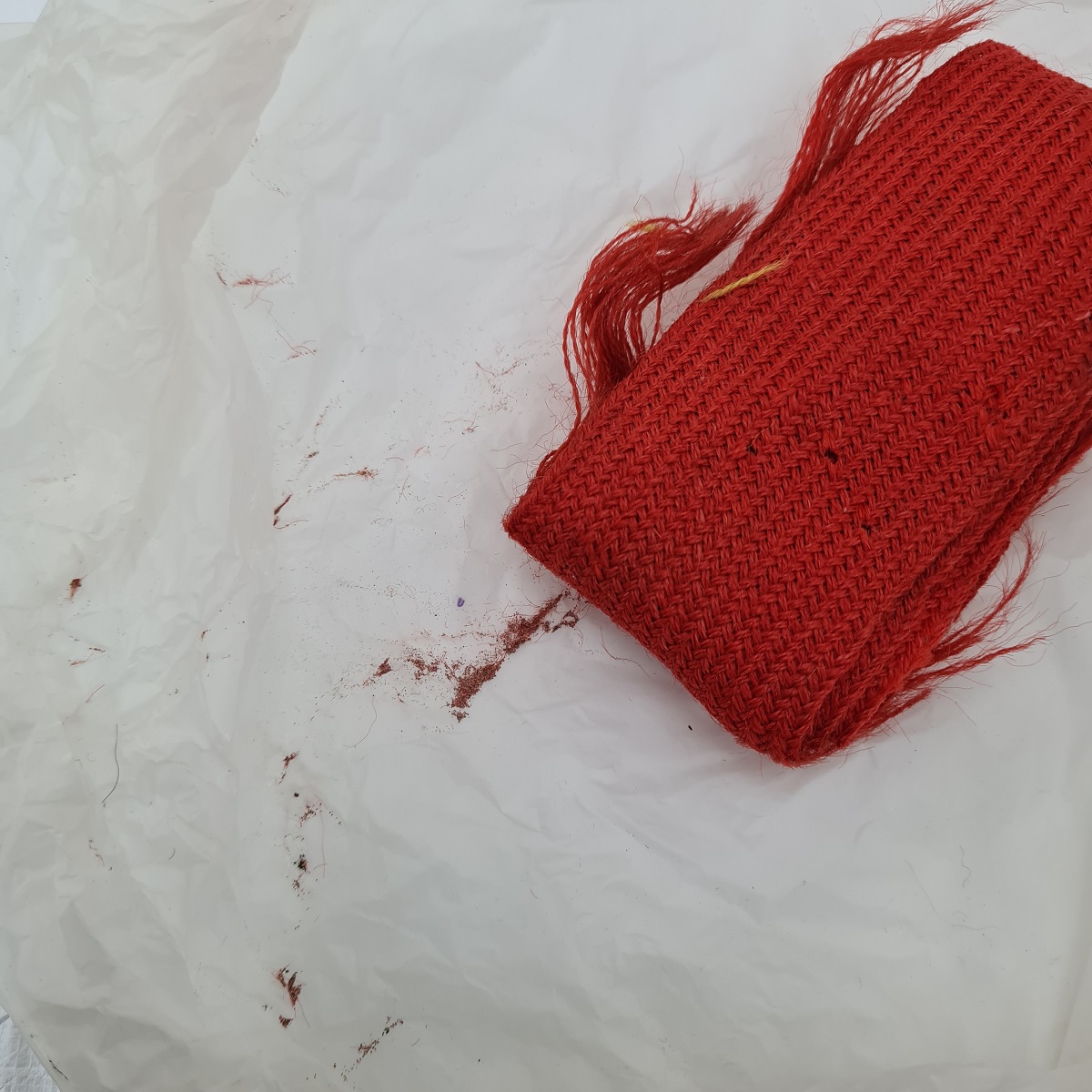
To deal with this sort of pest evidence we will remove the frass and cases and keep a close eye to see if any returns. If anything alive is spotted, or the frass or cases return, then we know there is still something alive within the object. It can then be frozen to kill off any pests that may be inaccessible and prevent the infestation from spreading.
Working through such a varied collection of objects, each with their own challenges, has allowed me to develop my adaptive problem solving. I can also teach various methods to the volunteers to encourage their own critical thinking when dealing with museum collections.
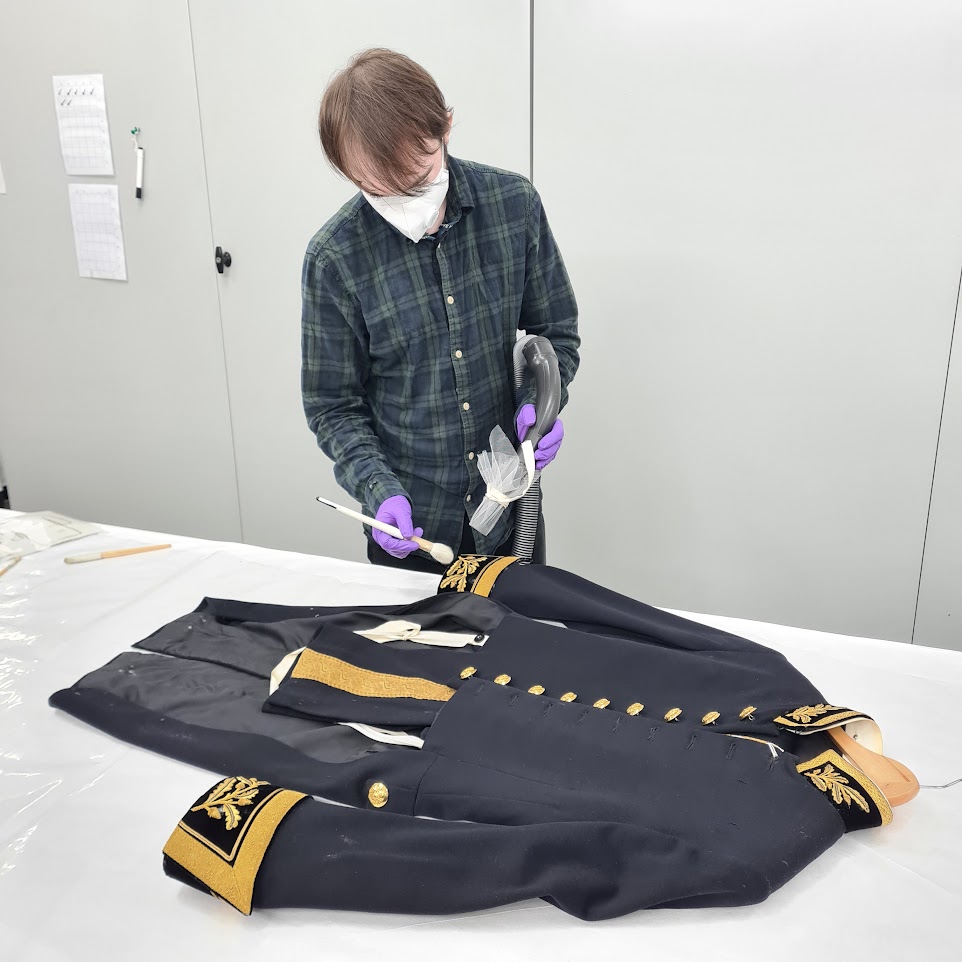
The volunteers will continue this work with me until at least June. At that point there should be a clearer indication of the number of objects and how much time is required to finish the project.
In the meantime, I have been continuing my usual collections care work including preparations for the reopening of Preston Manor and other exhibitions. I have also begun another project to run concurrently: cleaning and lacquering silver objects from the Royal Pavilion.
Updates to the progress of these projects and those of my fellow Graduate Conservator will follow throughout the year.
The next blog will be from Tessa Corton regarding light exposure monitoring at Preston Manor – due to changes in light levels from the redisplay – and remedial mould removal for the craft and film stores of Hove Museum of Creativity.
Keep an eye out for that soon, in the meantime, catch up with the previous post Behind the ropes with the new Graduate Conservators.
